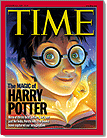What is the difference between a magazine and a journal article?
Answer
Identifying scholarly articles involves analysis of the article's content. The chart below is meant to help you in this process; any one criteria by itself may not indicate that an article is scholarly. For example, a 30 page photo spread about stars at the Academy Awards may not be scholarly.


Scholarly Popular
| Length | Longer articles, providing in-depth analysis of topics | Shorter articles, providing broader overviews of topics |
|---|---|---|
| Authorship | Author an expert or specialist in the field, name and credentials always provided | Author usually a staff writer or a journalist, name and credentials often not provided |
| Language/Audience | Written in the language of the field for scholarly readers (professors, researchers or students) | Written in non-technical language for anyone to understand |
| Format/Structure | Articles usually more structured, may include these sections: abstract, literature review, methodology, results, conclusion, bibliography | Articles do not necessarily follow a specific format or structure |
| Special Features | Illustrations that support the text, such as tables of statistics, graphs, maps, or photographs | Illustrations with glossy or color photographs, usually for advertising purposes |
| Editors | Articles usually reviewed and critically evaluated by a board of experts in the field (refereed or peer-reviewed) | Articles are not evaluated by experts in the field, but by editors on staff |
| Credits | A bibliography (works cited) and/or footnotes are always provided to document research thoroughly | A bibliography (works cited) is usually not provided, although names of reports or references may be mentioned in the text |